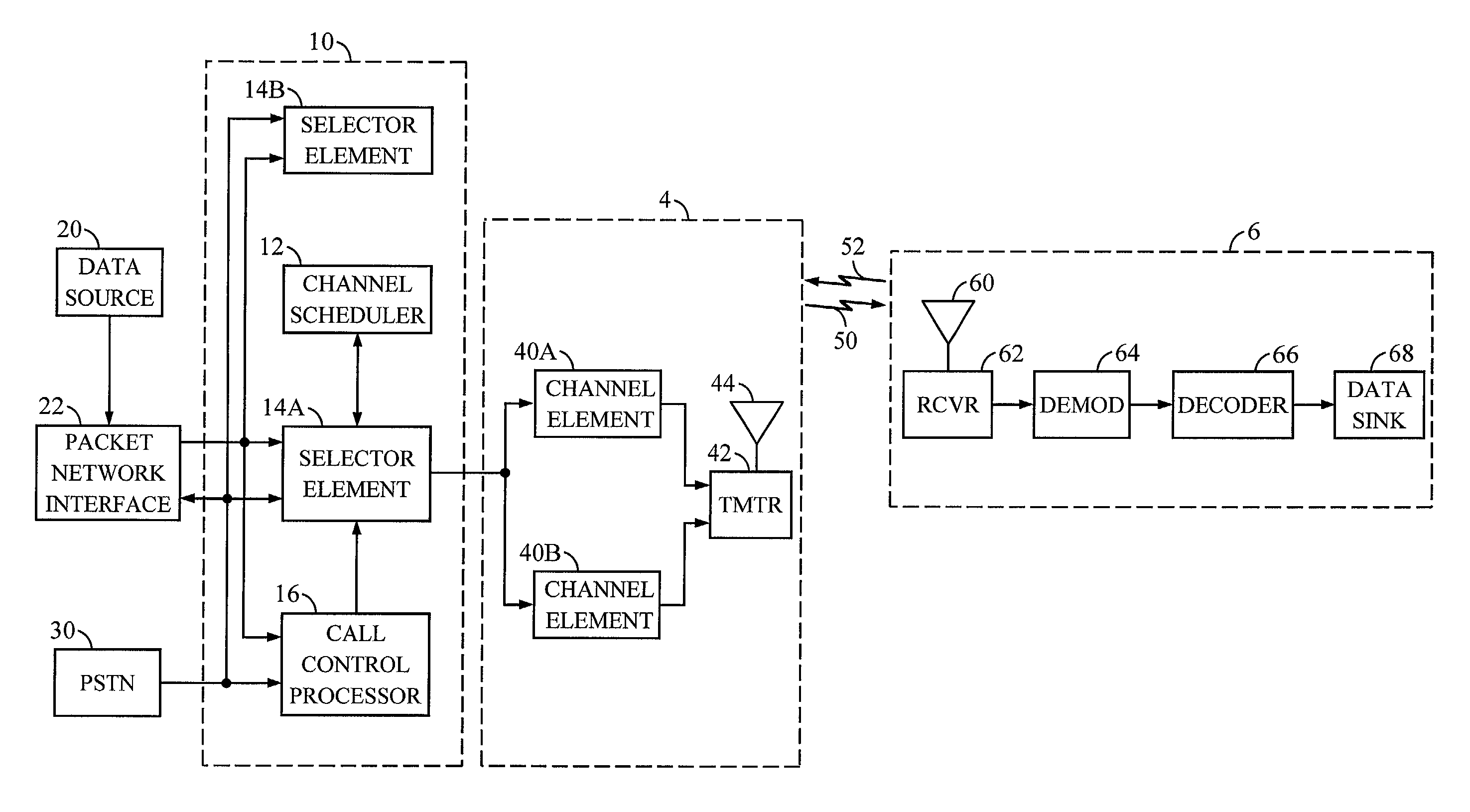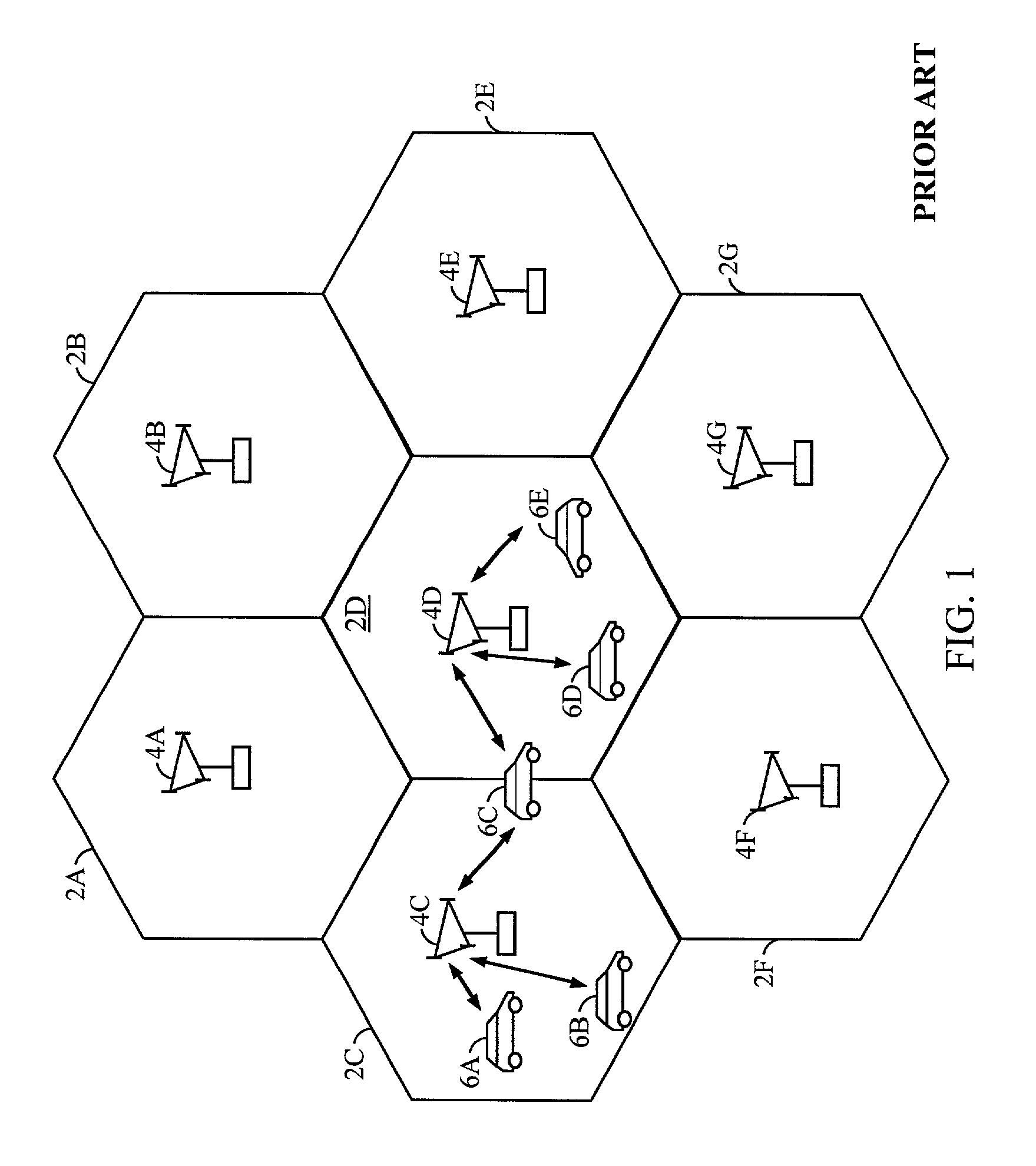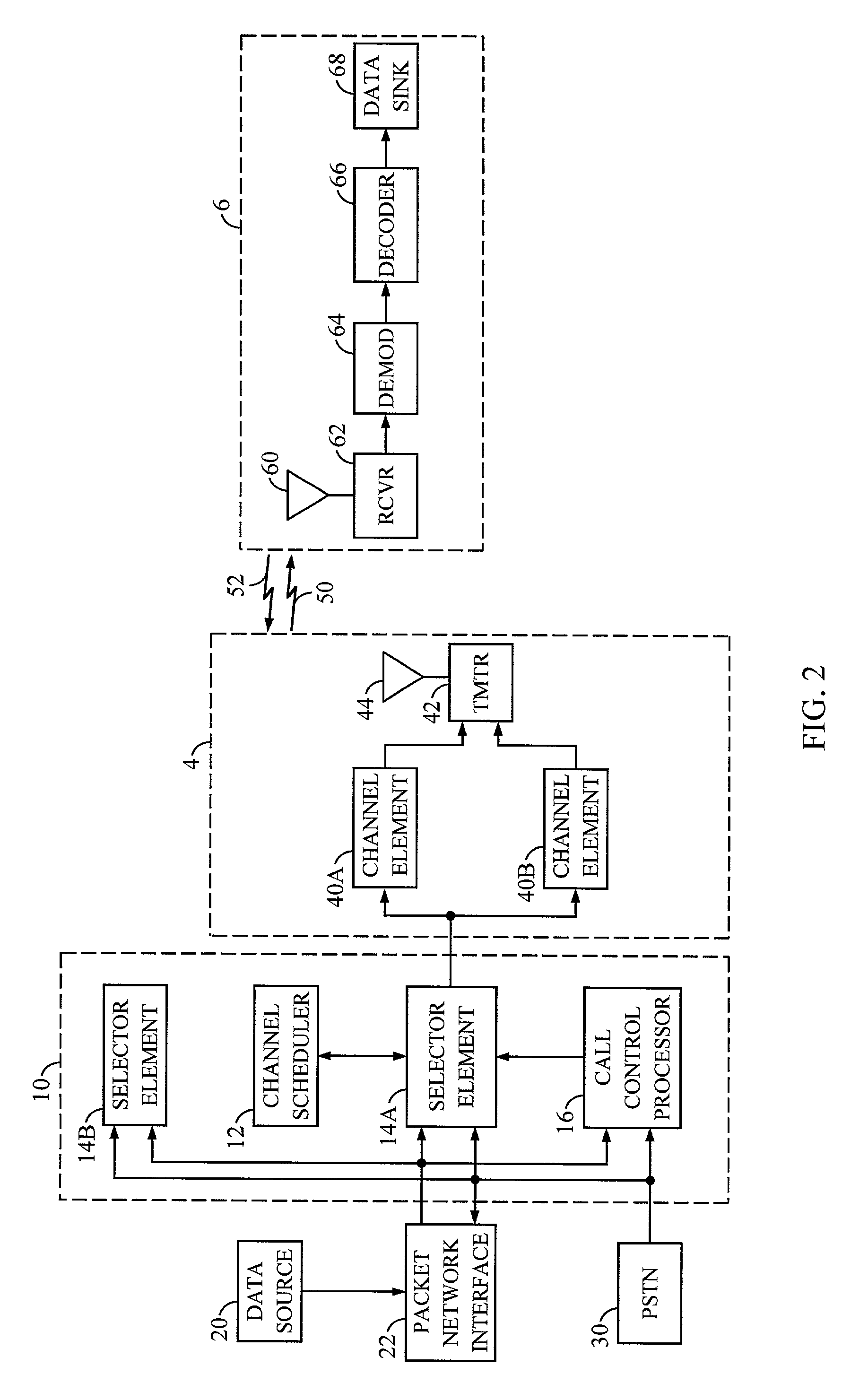Method and apparatus for forward link rate scheduling
a forward link and rate scheduling technology, applied in the field of data communication, can solve the problems of increasing the forward link capacity, reducing the transmit power, and limited the maximum transmit power available for each cell, so as to reduce the transmission delay in data communication and improve the utilization of forward links
- Summary
- Abstract
- Description
- Claims
- Application Information
AI Technical Summary
Benefits of technology
Problems solved by technology
Method used
Image
Examples
first embodiment
[0052]In the first embodiment, the resource allocation for the scheduled users, at step 202 of the flow diagram in FIG. 5, is further illustrated by the flow diagram shown in FIG. 6. Channel scheduler 12 enters the flow diagram of FIG. 6 after having collected the pertinent information necessary for the optimal assignment of data transmission rates to the scheduled users. Channel scheduler 12 starts at state 210. In the first step, channel scheduler 12 calculates the total residual power available for each cell in the CDMA network at step 212. The total residual power available for scheduled transmission for each cell is calculated as:
Pj=Pmax,j−Pbackoff,j−{circumflex over (P)}unscheduled,j′ (1)
where Pj is the total residual power available for cell j, Pmax,j is the maximum transmit power available for cell j, Pbackoff,j is the backoff power for cell j, and {circumflex over (P)}unscheduled,j is the predicted transmit power required for the unscheduled tasks at cell j. The backoff po...
second embodiment
[0058]In the second embodiment, selector element 14 can assign new data transmission rates for the scheduled users at each frame in the scheduling period based on changes in the required Eb / No of the scheduled users. This allows selector element 14 to maintain a quality communication of the scheduled and unscheduled tasks by maintaining the required Eb / No while limiting the required transmit power within the maximum transmit power available for the cells.
[0059]The total residual power available for each selected cell can also be allocated to the scheduled users without the use of an allocation loop. For example, the total transmit power can be allocated according to a weighting function. The weighting function can be based on the priority of the scheduled users and / or some other factors.
[0060]The priority list determines the allocation of the resource, e.g. transmit power, to the scheduled users. A scheduled user having a higher priority is allocated more resource than one having a ...
third embodiment
[0065]Alternately, in the third embodiment, the forward link rate scheduling of the present invention can be staggered. In this embodiment, the scheduling can be triggered by certain events. For example, channel scheduler 12 can perform the forward link rate scheduling whenever a request for high speed data transmission is received or whenever a scheduled high speed data transmission to remote station 6 is completed. Channel scheduler 12 has knowledge of the amount of data to be transmitted to each remote station 6 and the assigned transmission rate. Thus, channel scheduler 12 is able to determine when the high speed data transmission is completed. Upon termination of a scheduled transmission to remote station 6, channel scheduler 12 can perform the scheduling and allocate the forward link resource to other remote stations 6. The assigned transmission rate is transmitted to remote stations 6 which has been assigned a transmission rate.
[0066]The forward link rate scheduling of the pr...
PUM
 Login to View More
Login to View More Abstract
Description
Claims
Application Information
 Login to View More
Login to View More - R&D
- Intellectual Property
- Life Sciences
- Materials
- Tech Scout
- Unparalleled Data Quality
- Higher Quality Content
- 60% Fewer Hallucinations
Browse by: Latest US Patents, China's latest patents, Technical Efficacy Thesaurus, Application Domain, Technology Topic, Popular Technical Reports.
© 2025 PatSnap. All rights reserved.Legal|Privacy policy|Modern Slavery Act Transparency Statement|Sitemap|About US| Contact US: help@patsnap.com



